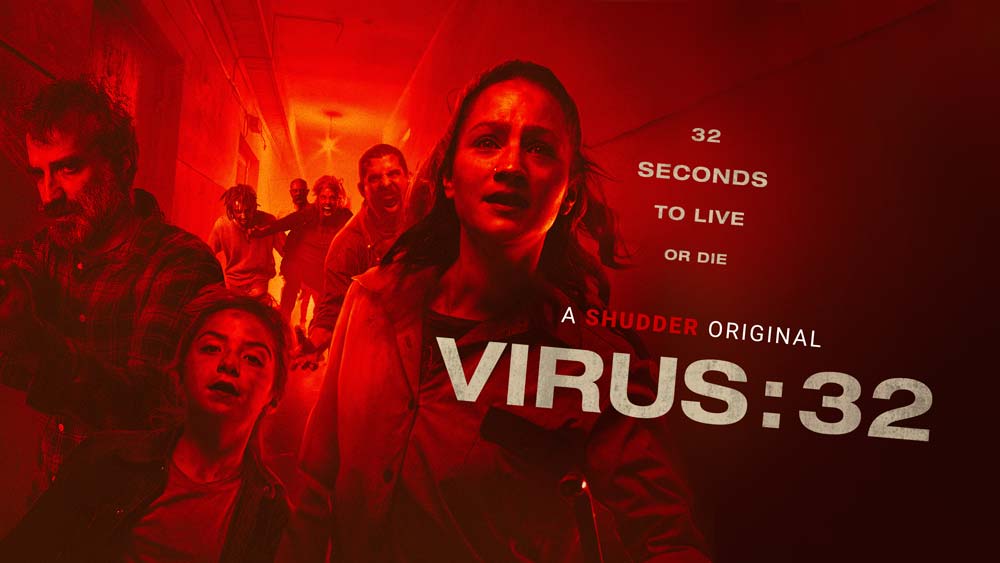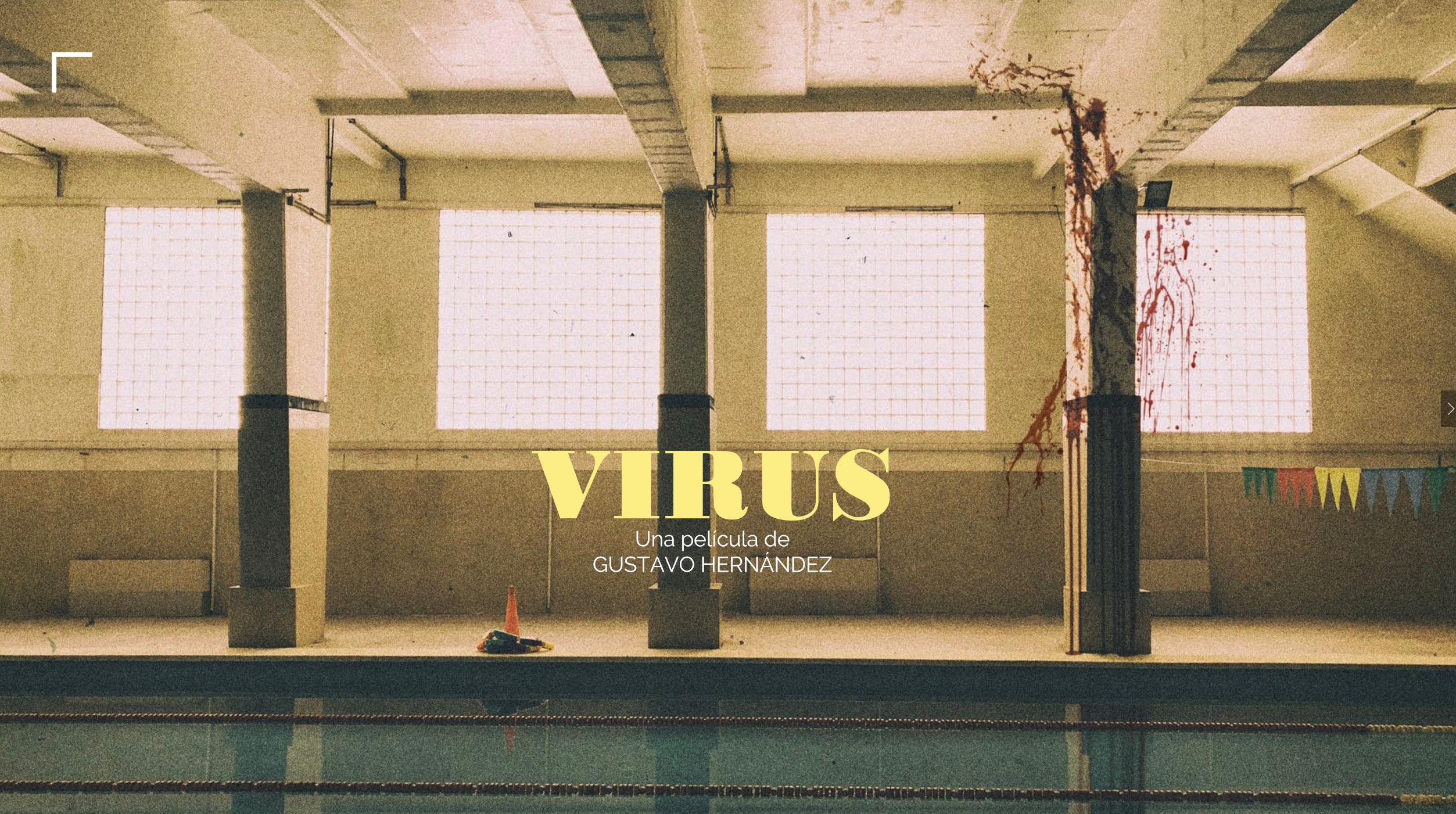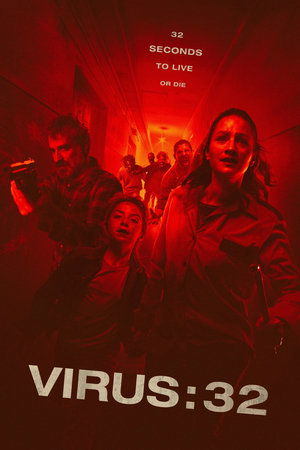An Analysis of Gustavo Hernandez’s Thriller
In recent times, we have witnessed the emergence of numerous horror films that explore the themes of confinement, isolation, and growing dread amidst a pandemic. Filmmakers have grappled with the challenge of working at a faster pace while coping with limited shooting days and resources. Despite these hurdles, some directors have managed to create intriguing and thought-provoking works that explore the anxieties and loneliness associated with the pandemic. Movies like Ben Wheatley’s “In the Earth,” The Adams’ “Hellbender,” and Rob Savage’s “Host” have been hailed as standout examples in the genre. However, Gustavo Hernández’s “Virus: 32” fails to fully capitalize on the potential of its pandemic-esque narrative and the thematic elements it explores.
A Familiar Storyline with a Twist
“Virus: 32” revolves around Iris (played by Paula Silva), a security guard who finds herself in a dire situation when she is forced to bring her daughter to work. As her daughter plays basketball with a broken arm and cast, Iris notices peculiar occurrences within the facility as night falls. Infected individuals start infiltrating the premises, transforming into hunters driven by a feverish urge to brutally kill the uninfected. Caught in the midst of a viral outbreak, Iris and her daughter must find a way to survive the night by exploiting the unique behavior of the infected individuals – they momentarily pause for thirty-two seconds after attacking someone.
An Atypical Zombie Thriller
While “Virus: 32” can be loosely categorized as a zombie thriller, it deviates from the conventional portrayal of zombies rising from the dead. Films exploring the concept of viruses controlling people’s minds and bodies have existed for quite some time, with classic examples like the 1950s adaptation of Jack Finney’s novel, “Invasion of the Body Snatchers.” However, the quarantine period prompted many horror directors to draw inspiration from the prevailing circumstances. In the case of “Virus: 32,” the film derives much of its influence and aesthetics from the 2007 hit, “REC.” Although it lacks the presence of a dedicated cameraman character, the film employs handheld shots during its intense horror sequences, especially in narrow sections and hallways. These scenes evoke a sense of suffocating tension, effectively engaging the viewer.
Hit or Miss Horror Sequences
While “Virus: 32” succeeds in establishing a connection between the audience and the characters, its execution of horror sequences is inconsistent. Certain claustrophobic set-pieces demonstrate effective direction and choreography, intensifying the suspense and immersing the viewer in the harrowing situations. However, other chase scenes lack the same level of finesse and fail to capture the same level of engagement. This discrepancy is partly attributed to the lighting choices in some sequences. In particular, a scene bathed in blood-red light initially appears visually striking but quickly becomes challenging to comprehend due to excessive shadows and poor lighting. Another sequence involving orange smoke flares, intended to heighten tension, suffers from disorienting and confusing camerawork. While a film can aim for a gritty and dark aesthetic, it is crucial to ensure that the on-screen action remains visible to the audience. Unfortunately, “Virus: 32” falls short in this aspect.
On a positive note, the film succeeds in evoking emotional investment in the characters, prompting genuine concern for their well-being. An emotionally charged scene involving an incinerator elicits a strong response from the audience. Although Iris’s character may not be as intricately developed as Angela from “REC,” Paula Silva delivers a commendable performance as a devoted mother fighting tooth and nail to escape the nightmarish confines and protect her daughter. However, one minor critique is that the film could have embraced a bloodier approach. With the potential for impactful kills and well-executed practical effects, the makeup team demonstrated their prowess in crafting convincing visuals. Yet, “Virus: 32” refrains from fully unleashing the crimson torrent onto the screen, missing an opportunity to leave a more visceral impact.

A Missed Mark in the Pandemic-Horror Genre
All in all, “Virus: 32” aspires to be a standout entry in the pandemic-horror genre but falls short of achieving its full potential. While some portions of the film successfully deliver on its premise, others leave the audience questioning the stylistic and directorial choices made. The movie’s reliance on thematic elements explored in previous films, such as “REC,” may lead to feelings of familiarity among viewers seeking fresh and innovative narratives. Nevertheless, through its engaging performances and moments of genuine tension, “Virus: 32” manages to leave some lasting impressions.
Conclusion
In an era dominated by pandemic-related anxieties, the horror genre has attempted to capture the essence of these extraordinary times, exploring themes of isolation, fear, and infection. While “Virus: 32” contributes to this cinematic exploration, it lacks the consistency and distinctiveness needed to truly stand out among its peers. Gustavo Hernández’s film is a commendable effort that engages the audience and offers glimpses of its potential greatness but ultimately falls short of leaving an indelible mark in the pandemic-horror landscape.
Frequently Asked Questions (FAQs)
1. Is “Virus: 32” a traditional zombie movie?
No, “Virus: 32” deviates from the traditional depiction of zombies. While it draws inspiration from the concept of viruses controlling people, the infected in the film do not rise from the dead like typical zombies.
2. What sets “Virus: 32” apart from other pandemic-related horror films?
“Virus: 32” distinguishes itself by incorporating an element of the infected individuals momentarily pausing for thirty-two seconds after attacking someone. This unique behavior adds an additional layer of suspense and strategic thinking for the protagonists.
3. How does Paula Silva’s performance contribute to the film?
Paula Silva delivers a solid performance as Iris, a security guard and mother fighting to survive in a nightmarish situation. Her portrayal effectively conveys the character’s determination, fear, and maternal instinct, enhancing the emotional engagement of the audience.
4. Does “Virus: 32” explore the psychological impact of a pandemic?
While the film primarily focuses on the immediate physical threats posed by the infected hunters, it indirectly touches upon the psychological toll of living through a pandemic. Themes of isolation, anxiety, and the instinct to protect loved ones permeate the narrative.
5. How does “Virus: 32” compare to other pandemic-horror films?
“Virus: 32” falls within the spectrum of pandemic-related horror films but fails to distinguish itself significantly. While it possesses moments of tension and engaging performances, it pales in comparison to other standout entries in the genre, such as “In the Earth” and “Host.”


